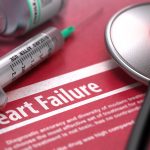
Suicide has become an urgent issue among American military veterans, with rates increasing by more than 10 times in nearly two decades, a new study reveals. “Suicide rates for post-9/11 veterans have steadily increased over the last 15 years and at a much faster pace than the total U.S. population, and post-9/11 veterans with TBI [traumatic brain injuries] have a significantly higher suicide rate than veterans without TBI,” said lead researcher Jeffrey Howard, from the department of public health at the University of Texas at San Antonio. In fact, the suicide rate for those with a TBI was 56% higher than among veterans who didn’t suffer a TBI, the researchers found. Exposure to TBI, even a mild one, is associated with severe long-term health risks, including suicide, Howard noted. “It used to be believed that once initial symptoms of a mild TBI resolved, the patient was healed and there were no long-term health impacts, but as we are compiling longer-term follow-up data on these patients a different picture is emerging,” Howard said. These data suggest that closer and longer-term monitoring of patients with TBIs may be needed, he explained. “In addition to the clinical implications, the data point to the need for a more holistic approach to ensuring veterans’ health and well-being, which would integrate family and social support networks and other societal factors,” Howard… read on > read on >



























-300x200.jpg)










